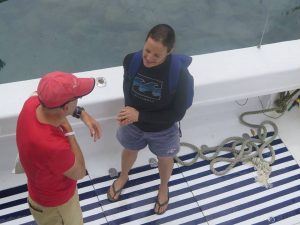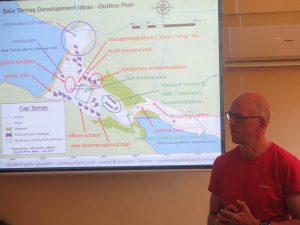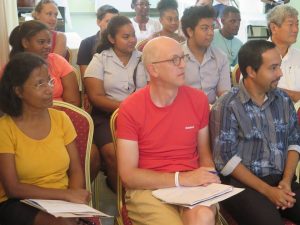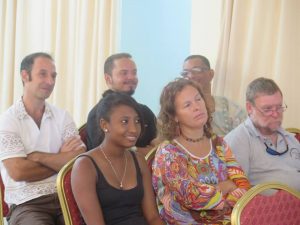10th September 2015
Positive feedback received following Ledgard’s visit
Mr Jonathan Ledgard has completed a three day working visit to the Seychelles under the Baie Ternsy Complementary Project being spearhead by the platform for Civil Society, CEPS.
CEPS invited Jonathan Ledgard, a lecturer and Director of the Afrotech Initiative at the Ecole Polytechnique Federal de Lausanne (EPFL) in his capacity as a thinker, to contribute towards the project aimed at bringing together ideas which enhances rather than hinders and endangers its values of Baie Ternay.
During Mr. Ledgards visit CEPS members, Government officials, and stakeholder and other civil society representatives have been brought together to better understand the concept being proposed by civil society . In line with this, the first activity held was a one-and-half hour meeting with Mr Ledgard at the Coral Strand conference room. The consultants involved in developing the project concepts gave a brief presentation of their findings so far and shared views with all present. About 22 participants , including Mr Ledgard and the CEPS teams, then travelled to Cap Ternay by boat from Bel Ombre. This was an opportunity to provide an understanding of the marine eco system as well as the terrestrial aspects of the area.
To facilitate this exercise, participants had the opportunity to snorkel around the bay, before going onshore to the GVI-SNPA centre.
After lunch at the centre the group divided into two: one group explored the lowland sites while another, including Mr Ledgard, climbed halfway up Cap Matoupa to view the site from above.
On the second day of his visit, Mr Ledgard met with representatives of Seychelles Tourism Board, the CEO of Seychelles National Parks Authority (SNPA) and the advisor to the Minister of Environment and Energy. The main areas of discussions were the terrestrial and marine assets of Cap Ternay and opportunities for research, educational and recreational activities that may take on the site. Issues of research that should inform future decision-making relating to the national park were of special interest to the SNPA.
During the afternoon, CEPS had organised a discussion session on resource mobilisation for all interested NGOs and public and private partners and agencies. Mr Ledgard made a presentation which focused mainly on challenges to human development, and innovative ways of exploring solutions. He proposed that Seychelles should clearly define its longer-term vision for the future, in particular within the Indian Ocean region. Resource mobilisation would then take place in line with the agreed vision.
On the final day of his visit, a visit had been scheduled at the University of Seychelles, where Mr Ledgard met with the director of the Blue Economy Research Institute which, according to proposed plans, is to be located at Cap Ternay. In view that the UniSey has itself made put forward proposals for the site, it was agreed at the meeting that the institute should aim to be a world class marine research and education centre of the Indian Ocean; one that brings together high level experts in relevant fields and provides the space for high quality research and education, especially linked to the protection of rare species specific to Seychelles. It should help to establish the basis for the development of a knowledge-based economy and put Seychelles on the knowledge map. An initial strategy could be the collation, integration and sharing of existing data derived from research projects already carried out on Seychelles’ various ecosystems.
Finally in the afternoon, a meeting with the Minister for Finance, Trade and the Blue Economy helped to further focus ideas that had emerged over the three days. Mr Ledgard made the proposals to Minister Adam with regard to the development of the Cap Ternay site, and they include having development of a high level research centre for knowledge creation and dissemination – incorporating the Blue Economy Research Institute. Secondly that there should be facilities for youth activities linked to the rehabilitation and valorisation of the site, some of which could be linked to the research and knowledge development activities of the research centre and lastly that there should be low environmental impact buildings that would house accommodation for a dozen to fifteen people, in comfortable, serene and peaceful style, but not opulent. The purpose of such accommodation would be to bring together high level thinkers – academics, politicians, social and spiritual movers.
The visit by Jonathan Ledgard has been an opportunity to bring together all those concerned with the future of Baie Ternay. The three day visit has also given the platform an opportunity to give visibility to the project which is due to come to a close in October






